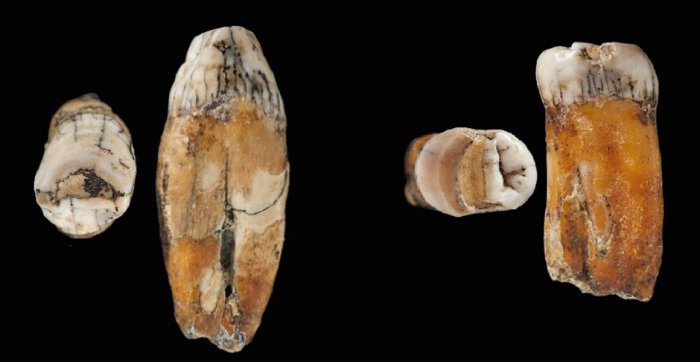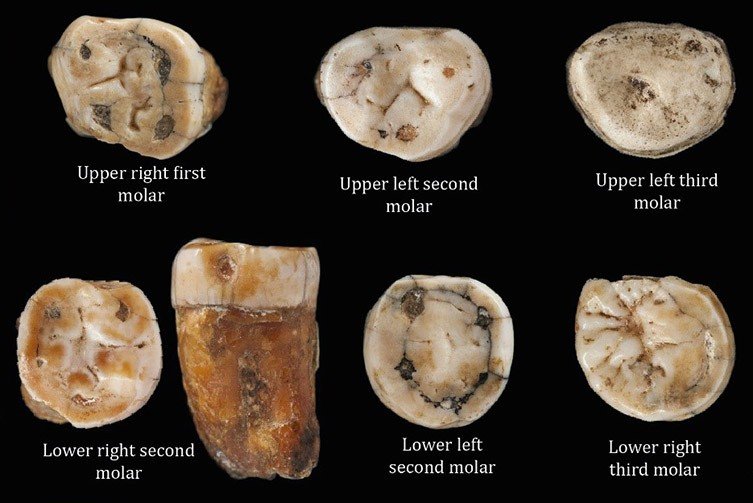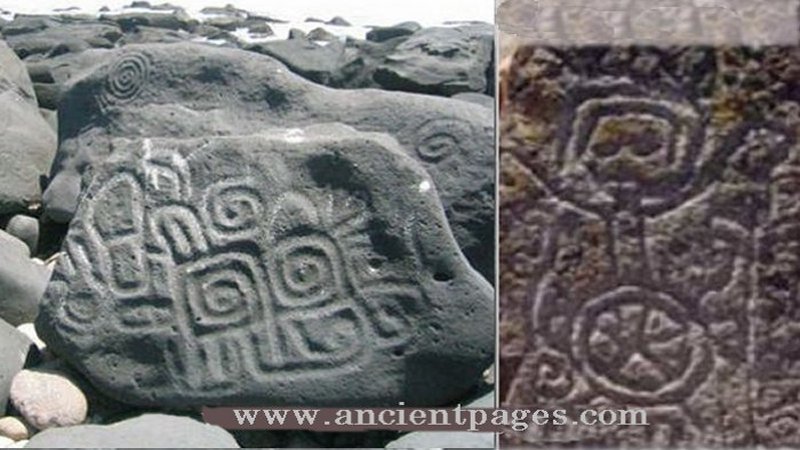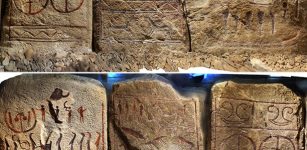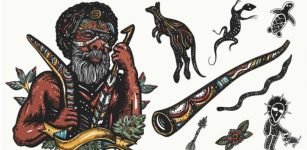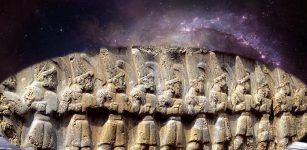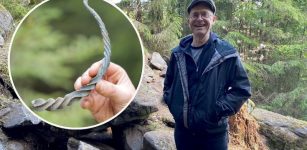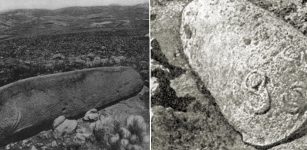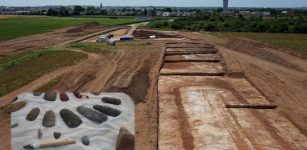Evidence Of A Hybrid Population Of Neanderthals And Modern Humans Discovered At La Cotte De St Brelade
Jan Bartek – MessageToEagle.com – How related are modern humans to the Neanderthals? Previous studies show modern humans have much more in common with the Neanderthals than previously thought and more evidence confirming our relationship with this extinct species of archaic humans is emerging.
Neanderthals lived in Eurasia until about 40,000 years ago. Why the Neanderthals went extinct has not been determined. Scientists have presented theories that include violence from encroaching anatomically modern humans, parasites and pathogens, competitive replacement, competitive exclusion, extinction by interbreeding with early modern human populations, natural catastrophes, and failure or inability to adapt to climate change.
One or a combination of these factors could explain the disappearance of the Neanderthals.
The cave of La Cotte de St Brelade, Jersey. Credit: Man Vyi – Wikipedia
Researchers are now speculating ancient teeth discovered in La Cotte de St Brelade in Jersey could be evidence of a hybrid population of Neanderthals and modern humans.
A set of 13 teeth was found between 1910 and 1911, and it was initially assumed to be Neanderthal remains, belonging to one individual.
However, a recent study of the teeth reveals signs of interbreeding between Neanderthals and our own species. This means that the teeth actually came from two different individuals.
“What’s more, while all the teeth have Neanderthal characteristics and their dimensions are consistent with those of Neanderthals, several of the teeth lack features normally found in these ancient humans. In fact, certain aspects of their shape are typical of modern humans, Homo sapiens,” the Natural History Museum explains.
Two of the teeth found in Jersey. It’s thought they could be evidence of a hybrid population of Neanderthals and Homo sapiens. Credit: Natural History Museum
We know from dating work at the site that the teeth are less than 48,000 years old, so they could be some of the youngest Neanderthal remains known – the Neanderthals are believed to have disappeared about 40,000 years ago.
It is also known that modern humans overlapped with Neanderthals in some parts of Europe after 45,000 years ago. So the unusual features of these cross-bred individuals suggest that the Jersey population could have had a dual ancestry.
“These teeth are less than 48,000 years old, which puts them into the time frame when Neanderthals and Homo sapiens overlapped. It does add to the possibility that there was a population with mixed ancestry. This idea of a hybrid population could be tested by examining ancient DNA from the teeth, which we are hoping to do in the future,” Chris Stringer, a human evolution expert at the Museum, says.
Some of the Neanderthal teeth recovered from La Cotte de St Brelade. Credit: Natural History Museum
The teeth are on display in the Jersey Museum & Art Gallery but were brought to the Natural History Museum for analysis.
Neanderthal archaeology is well preserved at La Cotte de St Brelade, spanning as much as 200,000 years of the Ice Age.
Excavations at the site between 1911 and 1920 found more than 20,000 stone tools from the Middle Palaeolithic (an industry associated with the Neanderthals in Europe). The bones of Ice Age megafauna such as mammoth and woolly rhinoceros have also been found there, as well as the only late Neanderthal human fossils known from the British Isles.
See also: More Archaeology News
“La Cotte de St Brelade is a site of huge importance and it continues to reveal stories about our ancient predecessors. Jersey Heritage has made a big investment to secure La Cotte against the challenges posed by climate change, and work continues to find the funding for further protection and research at this ancient site, where so much more waits to be discovered, Olga Finch, Jersey Heritage’s Curator of Archaeology says.
Could this new evidence also shed light on why the Neanderthals visited a special cave in New Jersey for over 100,000 years?
Written by Jan Bartek – MessageToEagle.com – AncientPages.com Staff Writer


